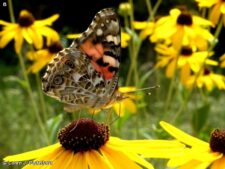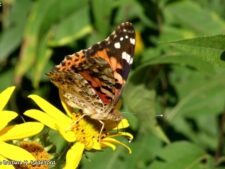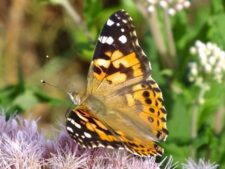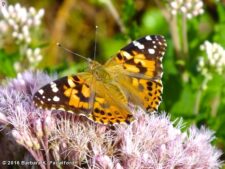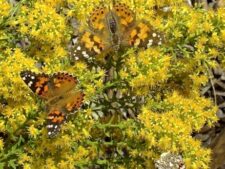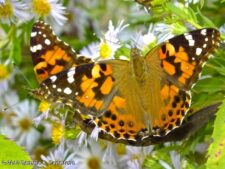
This butterfly has a wingspan of approximately 2 inches. Dorsally, it is orange and salmon pink with various dark spots and wide, black forewing tips with showy, white spots. Ventrally, the forewing is salmon pink basally with brown and white spots near the edge. The hindwing is a webwork of brown and white spots and bars with small blue eyespots across the median band. The antennae are brown with bright white tips. The very similar American Lady has large eyespots ventrally on the hindwing. The mature caterpillar is about 1 7/8 inches in length. The ground color is so variable that no 2 individuals are alike. It can be chartreuse to pink to reddish-orange to nearly black. It has long hairs on the head and sides and branched spines on the back. It often has a variously colored spiracular stripe along the sides.
This butterfly is a southern emigrant and in some years is very common. It can be found in summer through fall nectaring on a wide variety of flowers. Painted Lady Butterflies were exceptionally abundant in late summer and fall until frost In 2017.
The flight of the Painted Lady is fast and erratic. It cannot overwinter in any stage above a certain latitude. Painted Ladies winter in the South, and in spring they disperse northward to recolonize the continent. The caterpillar uses silk to construct a nest. The larva feeds on thistles, various other composites, mallows, legumes and lupines.
Disclaimer: The content of NatureSearch is provided by dedicated volunteer Naturalists of Fontenelle Forest who strive to provide the most accurate information available. Contributors of the images retain their copyrights. The point of contact for this page is: Babs Padelford.

